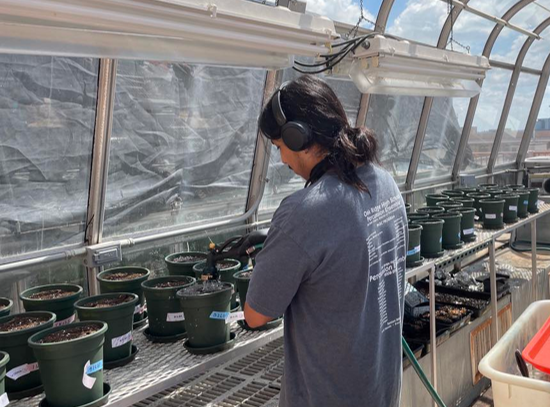Ecology Projects
Interactions between plants and soil microbes are common in nature, and have a pivotal role in mediating plant succession, invasion, and species coexistence. I use diverse approaches utilizing theories, modeling, experiments, soil sequencing, and statistics, to study their influence on plant communities under the following themes.
The first theme is “Can plant-soil-microbe interactions help explain how plant diversity is maintained?”. Back in my undergrad at UCLA, I worked with Gaurav Kandlikar to develop theory on microbially mediated fitness differences in the Modern Coexistence Theory Framework, and later we measured the new metric in a greenhouse experiment.
During my graduate school at UT Austin, I continued with a meta-analysis to quantify across systems microbially-mediated niche and fitness differences, and eventually microbial control on plant coeixstence. I am also developing a revised plant-soil feedback model that incorporates resource dynamics, where the additional mechanism could bring us a step closer to the observed diversity in nature.
I am interested in not only how plant diversity is maintained ecologically, but how plant diversity could be generated through evolution. Therefore, the second theme of my research is “Can plant-soil-decomposer co-evolution help generate evolutionary stable coexistence of plants with different strategies?”.
Lastly, I am also interested in finding out “What are the consequences of plant diversity loss, through plant-soil-microbe interactions”. Utilizing a field biodiversity experiment(#bef-exp-seq) and a follow-up greenhouse experiment (#bef-gh-exp) focusing on the effect of plant diversity loss and drought on soil microbiome, and on plant ecosystem functioning via soil microbiome.
Can plant-soil-microbe interactions help explain how plant diversity is maintained?
A revised plant-soil feedback model incorporating resource dynamics (2024-2025)
I will be presenting this ongoing work with my advisor Caroline Farrior at 2025 ESA, COS Population Dynamics: Modeling 1 (8/13 1:30 - 3 pm). Stay tuned, but here’s a glimpse:
Classic plant-soil feedback (PSF) models often present microbial growth as a function of host plant species abundance (species-specific cultivation), potentially leading to unbounded and independent growth of each microbial population. Moreover, current empirical results based on these models often reveal soil microbes as an impeding, rather than promoting force for pairwise plant coexistence, and the chance for multispecies (>2 plants) coexistence is even slimmer. Both are at odds with the commonality of soil microbes and plant diversity in nature.
Here we present a revised model with a simple carrying capacity of plants and an explicit incorporation of the process where soil microbial populations compete for plant-derived resources (e.g. root exudates, litter, root space for colonization). Analysis of a model with two plants and two microbial populations showed that the competitive outcome of plants and microbes depends on their initial conditions, leading to alternative stable states of competitive exclusion and coexistence of all, whereas classic models without explicit microbial competition for plant-derived resources only exhibit either coexistence or exclusion. In general, this basin of attraction for coexistence seems to be more sensitive to plant dynamics than to microbial dynamics. Together, our model showed the inclusion of a simple physiological mechanism in plant-microbe interactions can generate more complex competition outcomes than predicted by previous PSF models, offering a chance to reconcile theory with the context dependence observed in empirical data. This mechanism may also provide the missing link to understand how PSF can potentially maintain multispecies coexistence.
A meta-analysis of microbial control on plant coeixstence (2021-2022)
In collaboration with Jonathan Levine and Gaurav Kandlikar, I conducted a meta-analysis on the microbially mediated fitness differences and compared their magnitude with the frequency dependent effect generate by microbes, to obtain a more comprehensive picture of microbial influence on plant coexistence outcomes.
Check out our paper in PNAS.
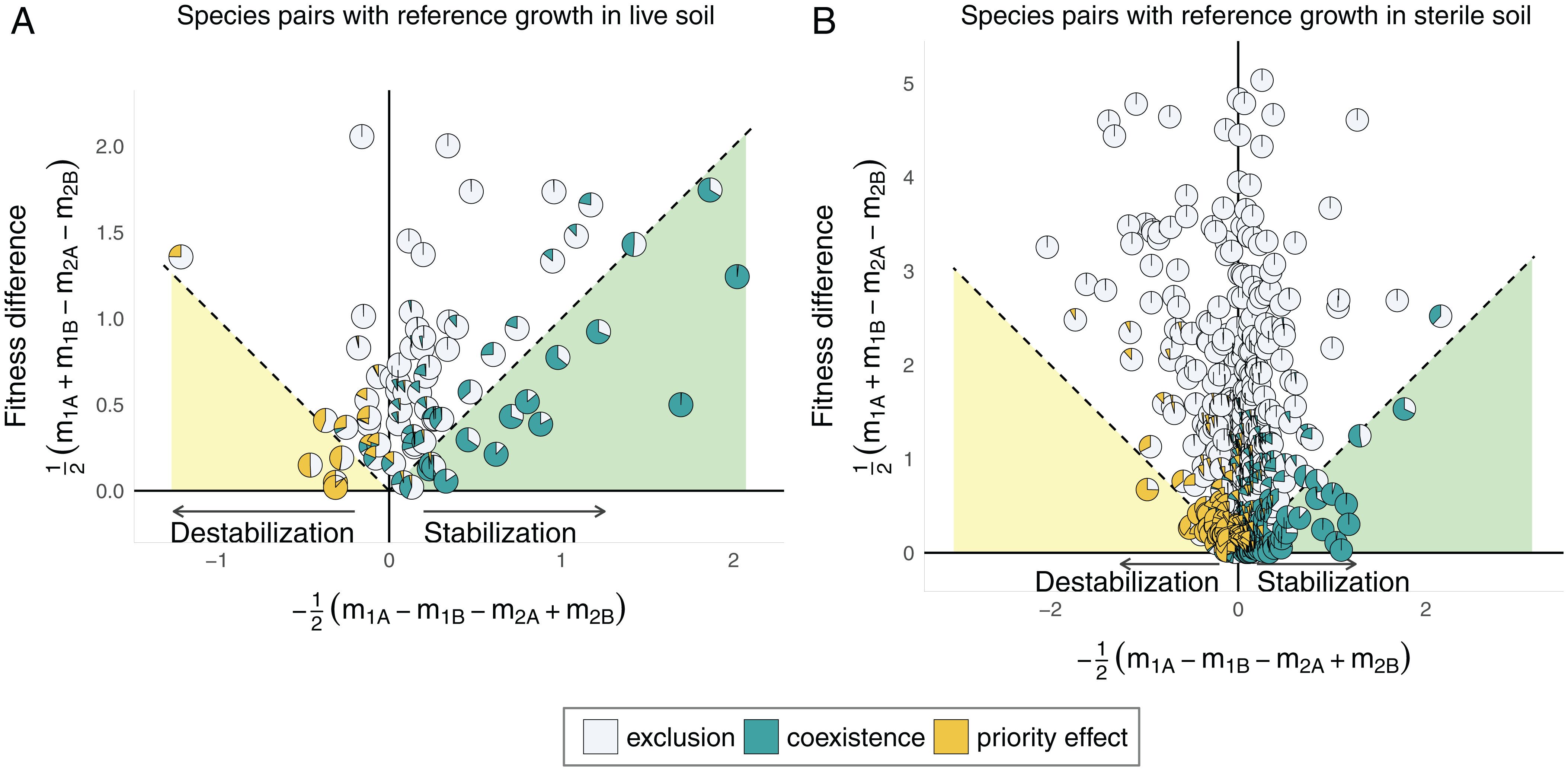
A greenhouse experiment quantifying microbially mediated fitness difference (2019-2020)
We conducted a Plant-soil feedback (PSF) greenhouse experiment on 6 California grassland species (15 pairs), and found that soil microbes frequently generate stronger fitness differences than stabilizing effect. This indicates that microbes often drive species exclusion in the classic PSF framework where other competitive abilities are assumed to be equal.
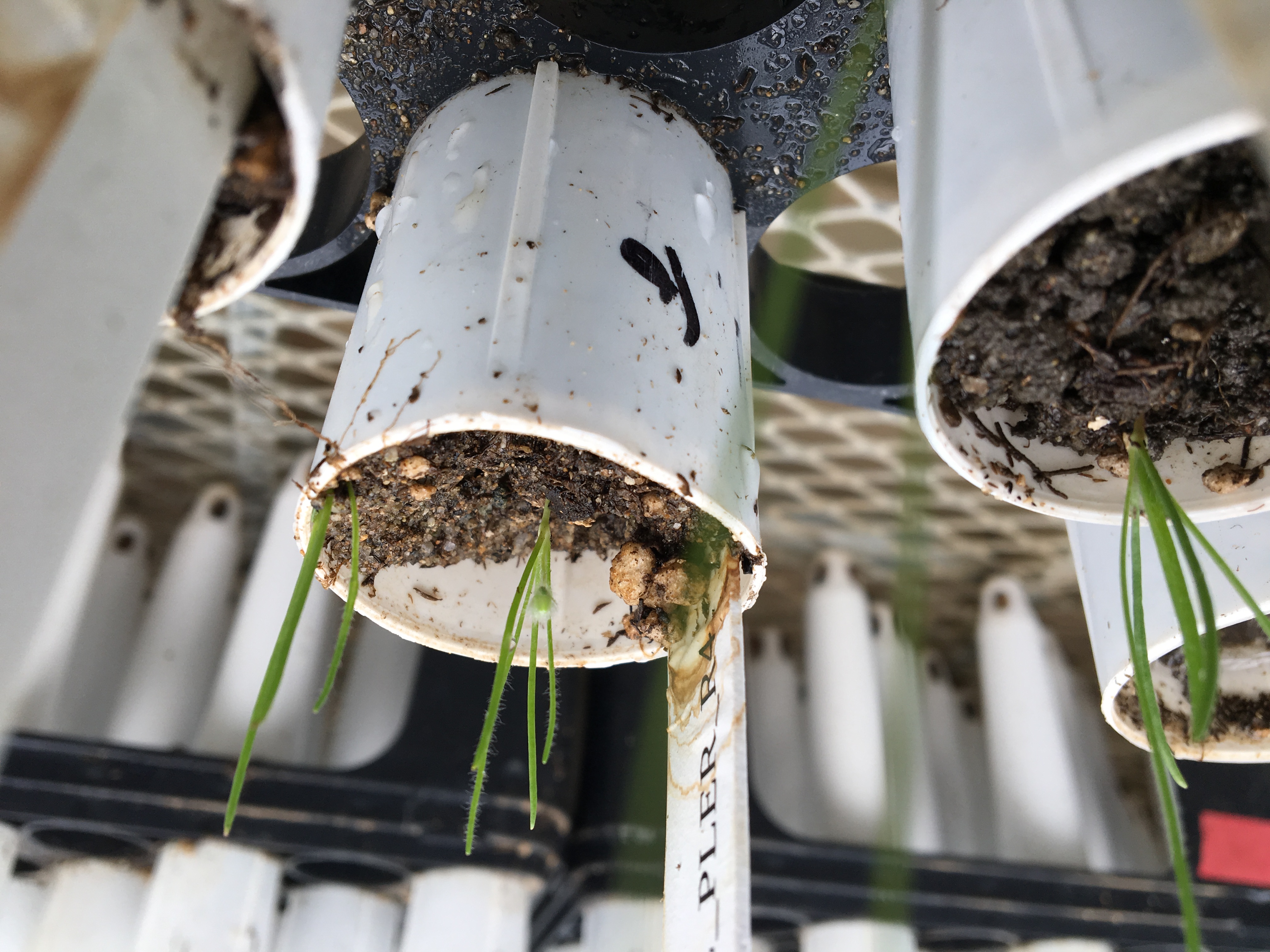
Read our paper in AmNat for more details.
Theory on microbially mediated fitness difference (2018-2019)
Applying the modern coexistence theory to the classic PSF framework, we showed that PSF can generate not only frequency dependence that stabilize or destabilize plant coexistence, but also frequency independent fitness difference. To correctly infer the effect of PSF on coexistence, the fitnesss difference must be compared with the (de)stabilizing effect.

Read our paper in Ecology Letters for more details.
Evolutionarily stable coexistence? (2025)
Using adaptive dynamics, we explore if plant-microbe interactions, e.g. Janzen-Connell effects, can allow plant species to have evolutionarily stable coexistence.
This is an in-progress project with my advisor Caroline Farrior. Stay tuned.
Consequences of plant diversity loss on soil microbiome and plant productivity (2022-2025)
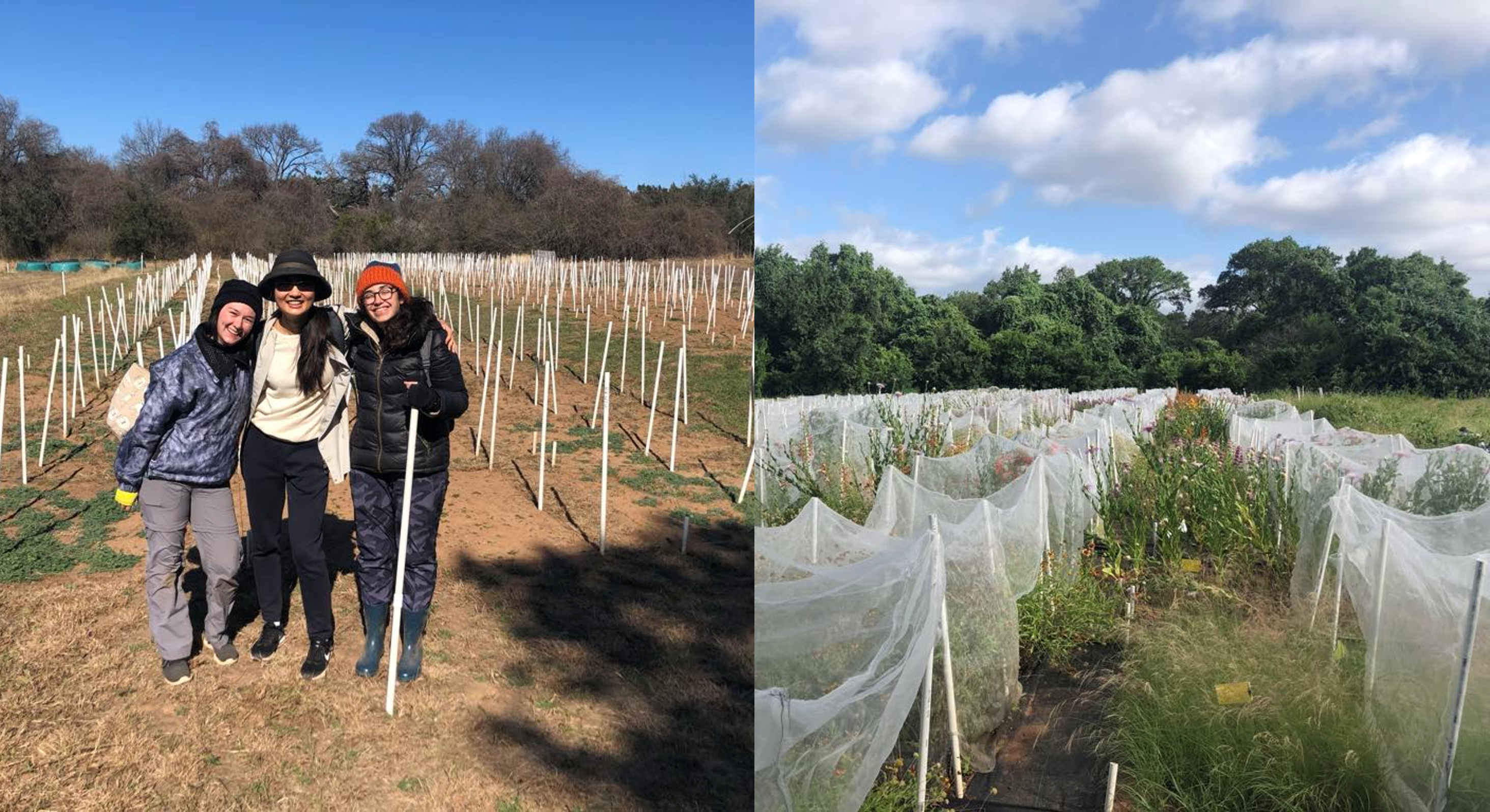
Drought and plant diversity loss on soil fungal communities (2022-2025)
Utilizing a biodiversity-ecosystem-functioning field experiment, I sequenced the soil fungal communities under treatments of drought, plant species richness, and plant phylogenetic diversity. The results suggest that biodiversity loss and drought can reduce AMF richness and alter fungal composition, and through these changes in soil microbiome, may further decrease plant productivity.
This project is in collaboration with Elizabeth Bowman, my labmates Sarah Ortiz and Damla Cinoglu, and my advisors Amelia Wolf and Caroline Farrior. The manuscript will be available BioRxiv by the end of summer.
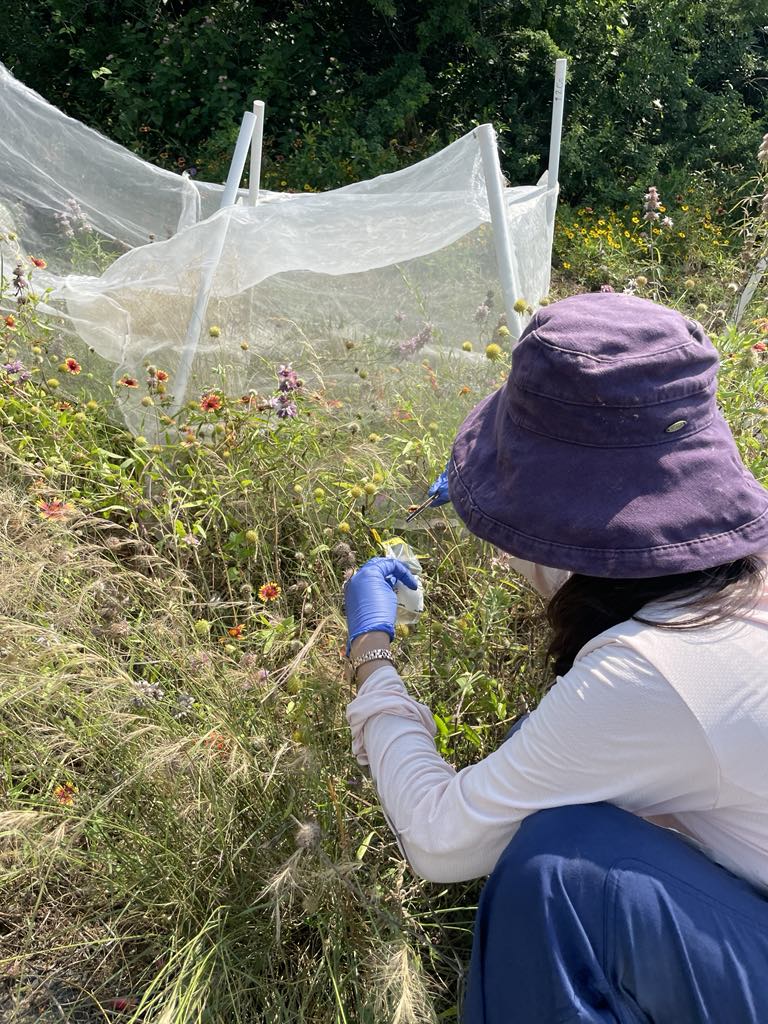
Drought and plant diversity loss on plant productivity through soil (2024-2025)
To more directly test the effect of AMF and whole soil microbiome on mediating the plant diversity-productivity relationship, we collected soil from the low and high plant richness treatments (2 vs 12 species) in our field experiment. These soil underwent 3 microbial community treatments: whole microbiome (intact), AMF-dominant (by sieving AMF spores), and no microbiome (by autoclaving), and was used to inoculate two types of plant communities (2 vs 12 species).
From our preliminary analysis, the whole microbiome may be a stronger contributor than AMF alone to the diversity-productivity relationship. Soil bacteria/other fungi may promote plant growth at an early-stage (more germination) and source-dependent (more beneficial from 12-sp plots than 2-sp plots), whereas AMF at a later-stage (bigger plants) and source-independent.
This project could not have been done without the great contribution of my undergraduate mentee, Jason Cruz Martinez.
